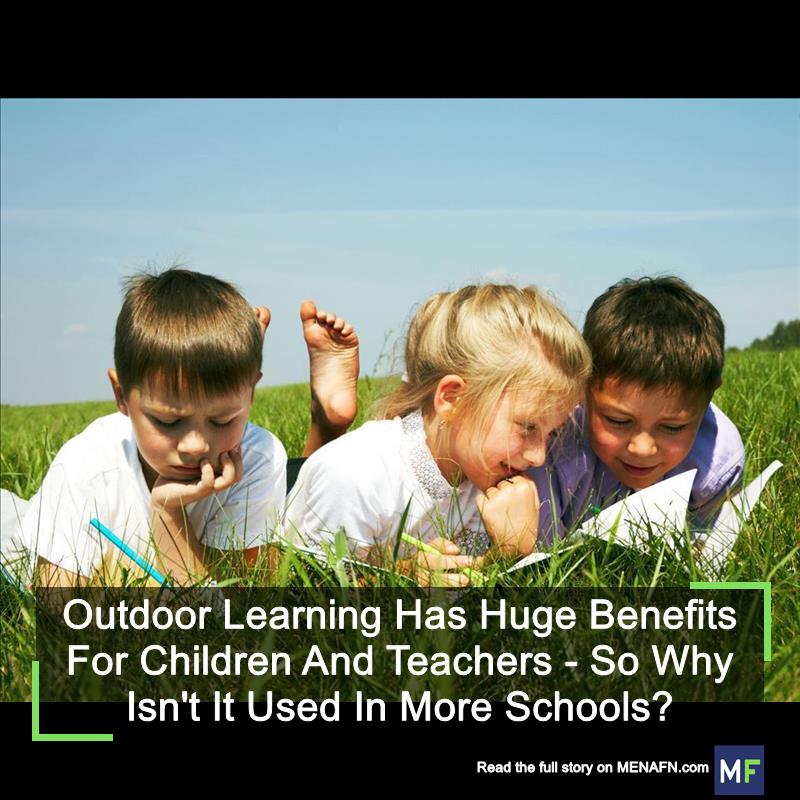
Outdoor Learning Has Huge Benefits For Children And Teachers - So Why Isn't It Used In More Schools?
But opportunities for children to access the natural environment are diminishing. Children are spending less time outside due to concerns over safety, traffic, crime , and parental worries. Modern environments have reduced amounts of open green spaces too, while technology has increased children's sedentary time. It is for these reasons and more that many think schools have arguably the greatest potential – and responsibility – to give children access to natural environments.
This is not just about improving break times and PE lessons, however. Across the UK, teachers are getting children outdoors by delivering curriculum-based lessons in school grounds or local areas. A variety of subjects, such as maths, art and science, are all being taken outside.
Teachers are taking pupils into local natural areas to learn curriculum-based subjects. springtime78/Shutterstock
Although there are no official statistics on how much outdoor learning is used, researchers have seen that its use is increasing . And while it is not part of the country's curricula for year three onwards in primary schools (age seven up), these outdoor initiatives are supported for all ages by the UK government, which has invested in the Natural Connections project run by Plymouth University, for example, and Nature Friendly Schools run by The WildLife Trusts.
However, despite the support, outdoor learning is still underused in primary schools – particularly in the latter years, when children are aged between seven and 11. So if there are such big benefits to outdoor learning, why isn't it happening more often? For our recently published study , we spoke to teachers and pupils to find out.
School adventuresThrough interviews and focus groups, we asked teachers and pupils their opinions on outdoor learning. The participants we spoke to all take part in the HAPPEN project , our primary school health and education network . These educators and students (aged between nine and 11) engage in outdoor learning – which we classed as teaching the curriculum in the natural environment – for at least an hour a week. Overall, the participants spoke of a wide range of benefits to pupils' well-being and learning. However, a number of challenges also existed.
The pupils felt a sense of freedom when outside the restricting walls of the classroom. They felt more able to express themselves, and enjoyed being able to move about more too. They also said they felt more engaged and were more positive about the learning experience. In addition, we also heard many say that their well-being and memory were better. One student commented:
Teachers meanwhile discussed the different approach to lessons, and how it helped engage all types of learners. They also felt that children have a right to be outdoors – especially at a time when their opportunities to access the natural environment is limited – and schools were in a position to fulfil this.
Importantly, the teachers spoke of increased job satisfaction, and that they felt that it was“just what I came into teaching for”. This is particularly important as teacher well-being is an essential factor in creating stable environments for pupils to learn , and current teacher retention rates are worrying .
Rules and boundariesAt first the teachers had concerns over safety, but once pupils had got used to outdoor learning as part of their lessons, they respected the clear rules and boundaries. However, the teachers also told us that one of the main reasons why they didn't use outdoor learning more often was because it made it difficult to measure and assess learning outcomes. The narrow measurements that schools are currently judged on conflict with the wider benefits that outdoor learning brings to children's education and skill development. It is hard to demonstrate the learning from outdoors teaching using current assessment methods. As one teacher said,“there is such a pressure now to have evidence for every session, or something in a box, it is difficult to evidence the learning [outdoors]”.
Funding was also raised an issue as outdoor clothes, teacher training and equipment all need additional resources.
Our findings add to the evidence that just an hour or two of outdoor learning every week engages children, improves their well-being and increases teachers' job satisfaction. If we want our children to have opportunities where“you don't even feel like you're actually learning, you just feel like you are on an adventure” and teachers to“be those people we are, not robots that it felt like we should be”, we need to change the way we think about school lessons. Teaching doesn't need to follow a rigid classroom format – a simple change like going outside can have tremendous benefits.

Legal Disclaimer:
MENAFN provides the
information “as is” without warranty of any kind. We do not accept
any responsibility or liability for the accuracy, content, images,
videos, licenses, completeness, legality, or reliability of the information
contained in this article. If you have any complaints or copyright
issues related to this article, kindly contact the provider above.

















Comments
No comment